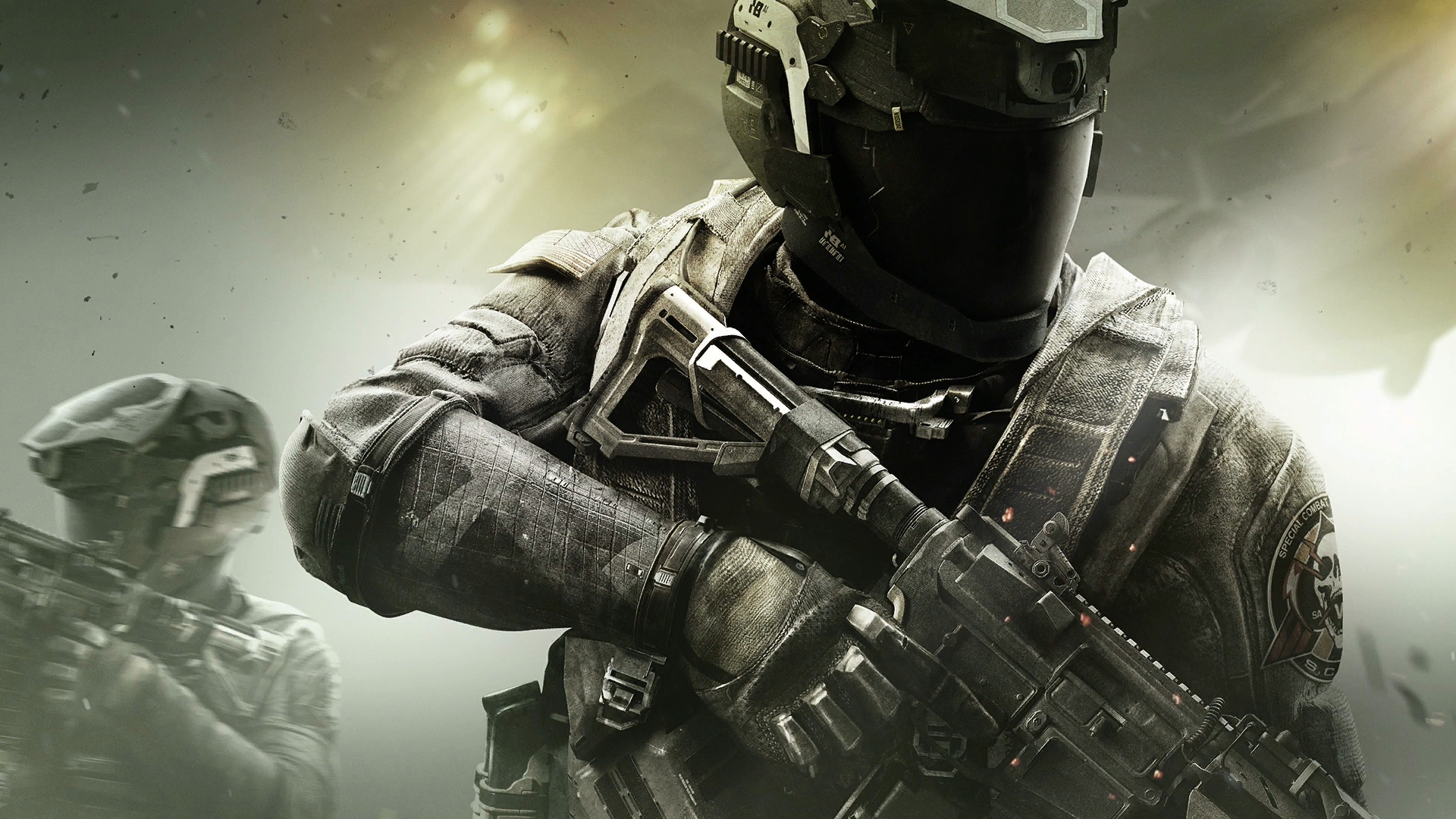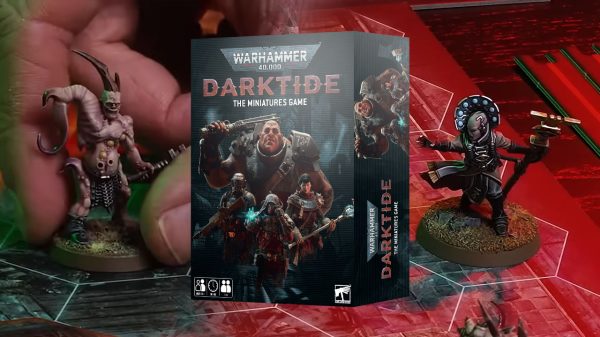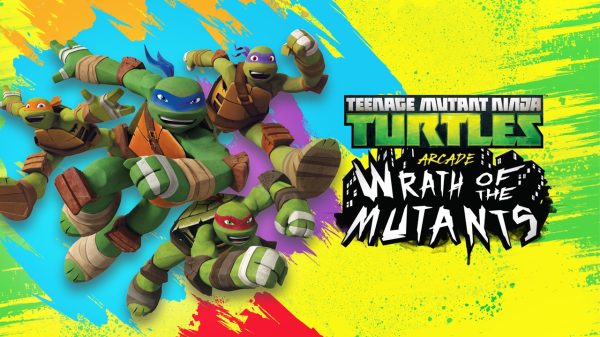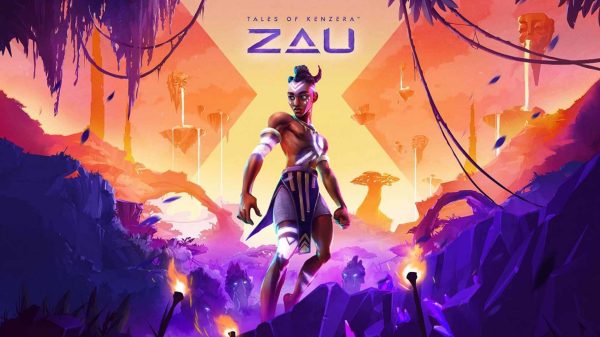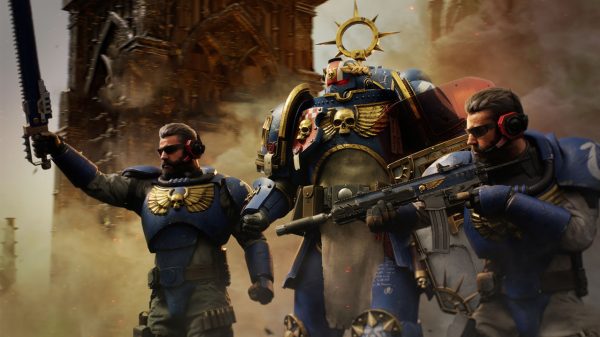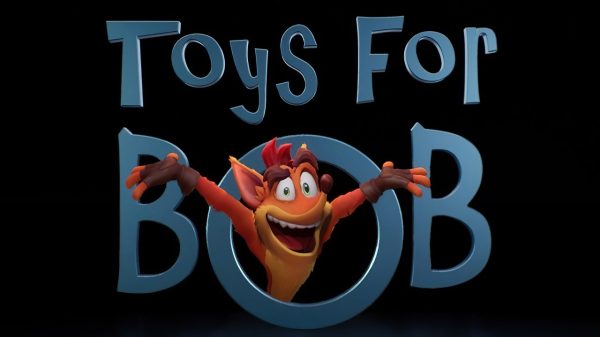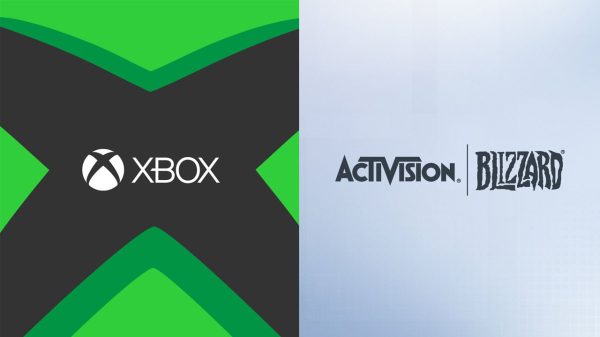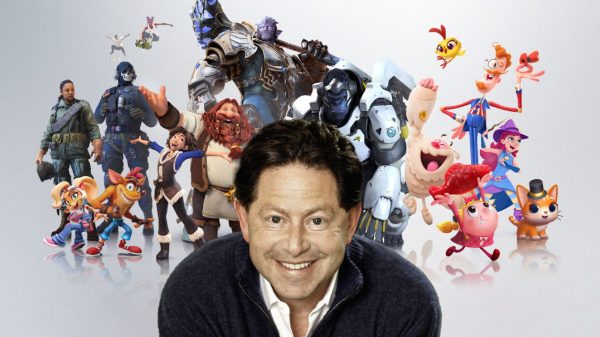Call of Duty (or Carl of Doody as it’s referred to in the States) is a franchise that has managed to endure constant criticism and general hate bandwagonnery for many years. Its sales have been in steady decline since Modern Warfare 3, however it still sells a ludicrous amount of copies year in year out. While many are quick to point to the rivalry between the Battlefield series and Call of Duty and the fact that the former seems to be winning in terms of popular online opinion, in the past Activision’s juggernaught franchise has outsold EA’s offerings by a very large margin, and with it has generated enough cash to likely be making EA jealously cry into their silk napkins. But as we all (should) know, strong sales do not the good game make, for instance the brilliant Titanfall 2 is currently suffering from low server populations despite the fact it is one of the most critically-acclaimed FPS of recent memory. So the fact Infinite Warfare has and will continue to sell like hotcakes is unsurprising (especially given that it had to be bought in order to access the Modern Warfare remaster), but how does it stack up in a gameplay sense? The answer to that question is: quite well in fact. Infinite Warfare features one of the most interesting campaigns for the franchise in a long while, and while the multiplayer component might be a little derivative and contains unscrupulous microtransactions, it delivers fantastic weapon variety and a sense of progression that make it as addicting as ever.

You know nothing, Admiral Kotch

I remember watching the campaign reveal streamed on Twitch during E3 2016. Revealed with no official context, it showcased seamless space battles and tantalising gravity-based violence that really grabbed people’s attention. Shortly after this gameplay snippet it was then revealed to be the latest space COD and the Internet proceeded to flip tables in anger; hopes that a new cool-looking IP was entering the fray were dashed in an instant. But while the campaign still has COD’s unmistakeable DNA, underneath the space explosions and general bombast there is a thoughtful and reflective core brought to the fore by brilliant characterisations and tight writing.
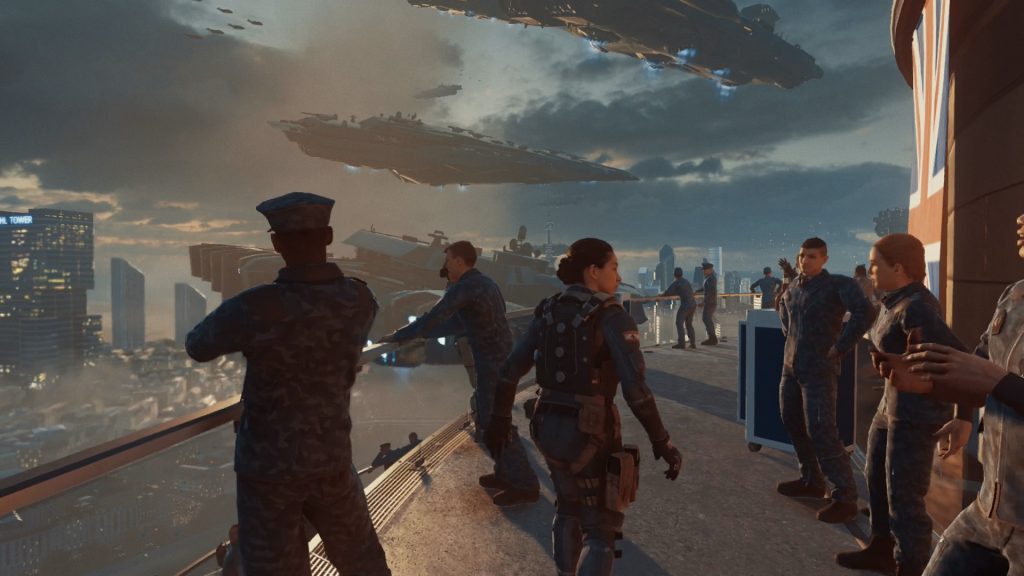
A beautiful day to die
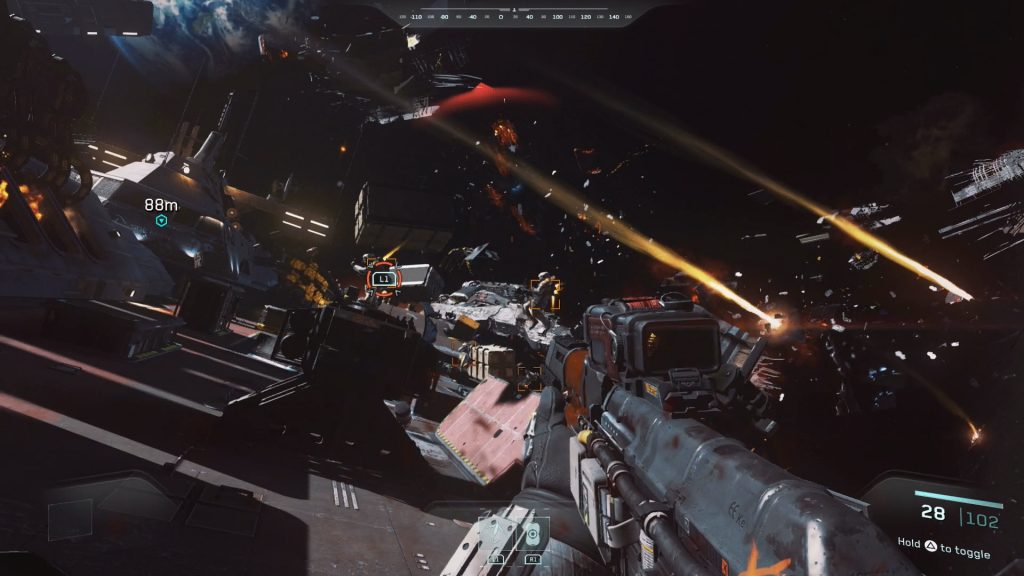
Guns in space
The campaign takes place in the distant future, with mankind’s reach having extended past Earth and out into the greater solar system. Comprised of Earth’s nations and protected by the military might of the Solar Associated Treaty Organisation (SATO), the United Nations Space Alliance (UNSA) oversees the mining of the distant planets of our solar system and maintains peace and order. Turns out not everyone is cool with this though, and twenty years prior to the game’s commencement an insurgency known as the Settlement Defense Front (SDF) has violently seceded from the UNSA in the appropriately named Secession Wars (irrelevant sidenote: SDF is the politically correct abbreviation for homeless people in the French language: sans domicile fixe). As the game commences a tense standoff between the splintered nations is abruptly broken when the SDF actively attacks one of Earth’s cities Geneva, annihilating key SATO forces and wreaking general havoc. You play the role of Nick Reyes, a high-ranking hotshot space pilot who finds himself in command of one of only two remaining warships of the UNSA: the conveniently well-named Retribution. Following UNSA commands you must destabilise the SDF forces and stop them from enacting their nefarious plans to destroy and enslave all of Earth.
On the face of it the plot is a fairly simple case of good guys versus bad guys in space. In fact, the motivations of the SDF are never really explained and we are just made to accept the fact that they simply represent the warmongering arseholes of space who hate Earth because reasons. Loading screens will inform you of some of their more radical social policies like compulsory 30-year military service from the age of twelve, actively enlisting Earth-born war criminals and inter-generational punishment for certain crimes, but I have no idea how they all became so angry and mean. The SDF forces are led by Admiral Kotch (played by none other than Kit Harington aka Jon ‘The Books Were Better’ Snow), and while he does a fantastic job of portraying a pitiless malevolent bastard, I just wanted to give him a hug and ask who hurt him most of the time.
…the motivations of the SDF are never really explained and we are just made to accept the fact that they simply represent the warmongering arseholes of space who hate Earth because reasons…
One might think that this cardboard cut-out villainy would detract from the narrative, but somehow it actually serves to make it more introspective and personal. The story becomes less about a clash of philosophies between warring nations, and becomes more about the bonds between squadmates, the nature of sacrifice and the weight of command. It’s a rare thing for a COD game to make you care about its characters, but I found myself rooting for my team and deeply interested in their backstories. It was positively enthralling watching Reyes learn to take charge and make tough decisions that gambled with the lives of others, and it actually brought up some interesting philosophical notions that are applicable in any theatre of war; does the fact that men’s lives can be willingly sacrificed by those in command for the greater good make them worth nothing, or does it make them worth everything? There’s a surprising emotional angle here, and I challenge you to remain unmoved when you listen to some of the crew member’s final words recorded in the instance that they might not come home.

I feel like taking this mission near Mercury puts us a little close to the Sun
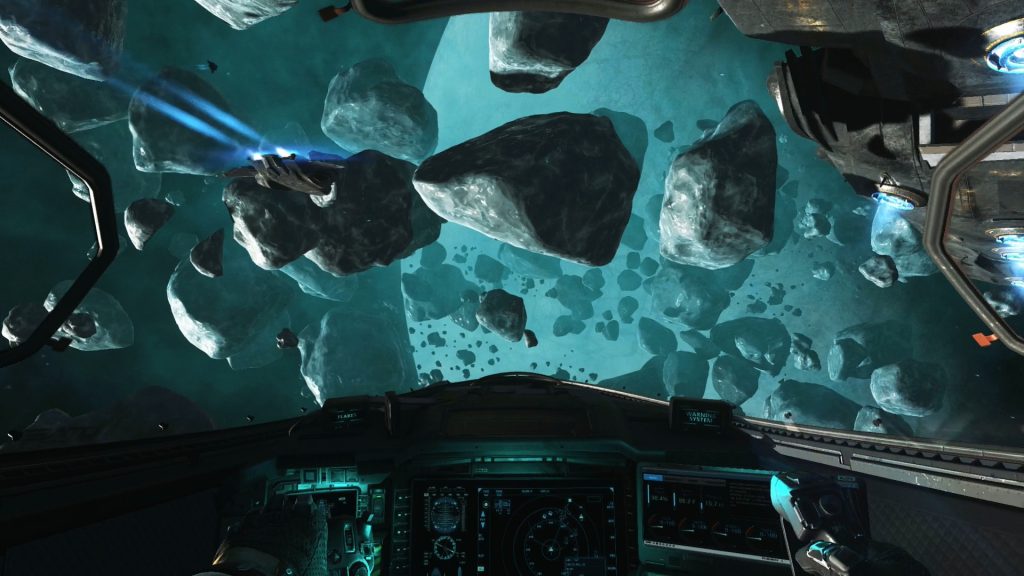
‘Cause I miss you baby, and I don’t want to miss a thing
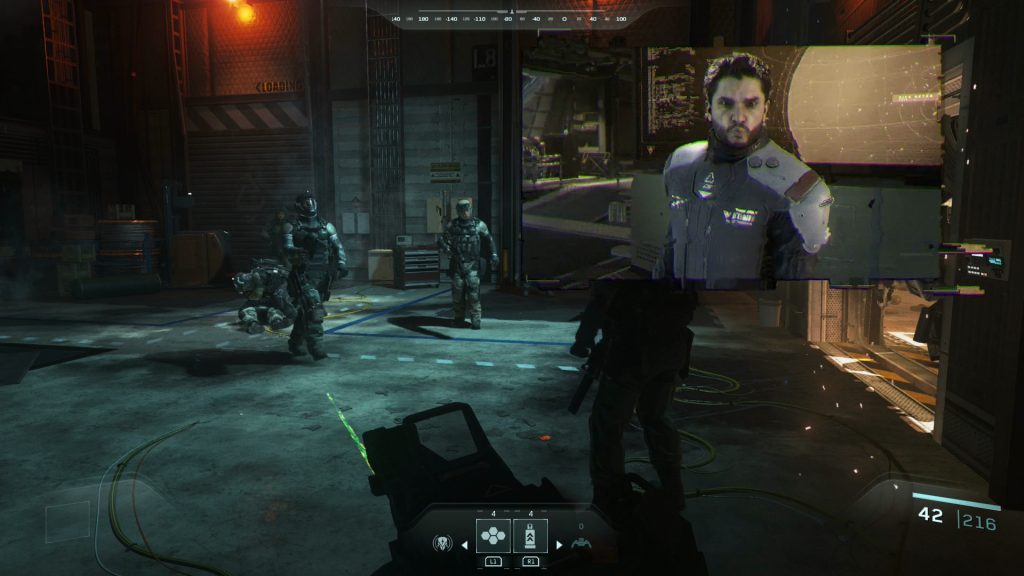
While he may be megalomaniacal lord of the arseholes of space, there’s always time for a cheeky duckface
This is COD through and through though, so you can expect the same crazy set-pieces and gunplay you’ve come to expect from the series. The game makes a brilliant use of the vastness of space to craft stunning vistas and destruction and chaos on an epic scale. The aforementioned gravity-based violence also works really well too, and while some of the physics might have Neil De Grasse Tyson frowning scientifically, transitioning from zero-G gunfights to space boots on the ground sections feels awesome. The gunplay is also mixed with some fun and arcadey dogfighting missions, shaking up the standard gameplay to good effect. There are side-missions you can choose freely from a solar system map that involve these aforementioned dogfighting segment or smaller operations you can undertake in order to undermine the SDF. Completing these optional missions gives you perks and weapon enhancements, and the Operations in particular are quite well crafted, often relying on stealth and the element of surprise to infiltrate ships and assassinate key targets in the SDF military.
…does the fact that men’s lives can be willingly sacrificed by those in command for the greater good make them worth nothing, or does it make them worth everything?
All things considered, the stellar campaign is worth the price of admission alone. Infinity Ward have done a commendable job of delivering an emotionally-charged and thoughtfully introspective narrative and transposing it into beautifully vast environment with more lasers and explosions than you can poke a space stick at. It’s a great balance of good old-fashioned FPS fun and serious themes around war and sacrifice, and comes highly recommended.

While slightly uninspired in parts, I actually ended up having quite a bit of fun with IW’s multiplayer. The game continues the trend of trying to mimic Titanfall’s slick parkour movement, and its success lies somewhere between that of Advanced Warfare (where movement was as chaotically frantic as a bag full of cats on drugs) and Black Ops 3 (which successfully toned down AW’s wild antics). It doesn’t feel quite as smooth as BO3’s movement systems but really they’re incredibly similar. In fact, the whole thing looks and feels very similar to BO3 in many ways, and cries that it’s a loosely reskinned version of that game are fairly accurate. This isn’t necessarily a bad thing, but it throws more fuel on the blazing inferno of criticism that COD does little in the way of change or innovation between iterations.
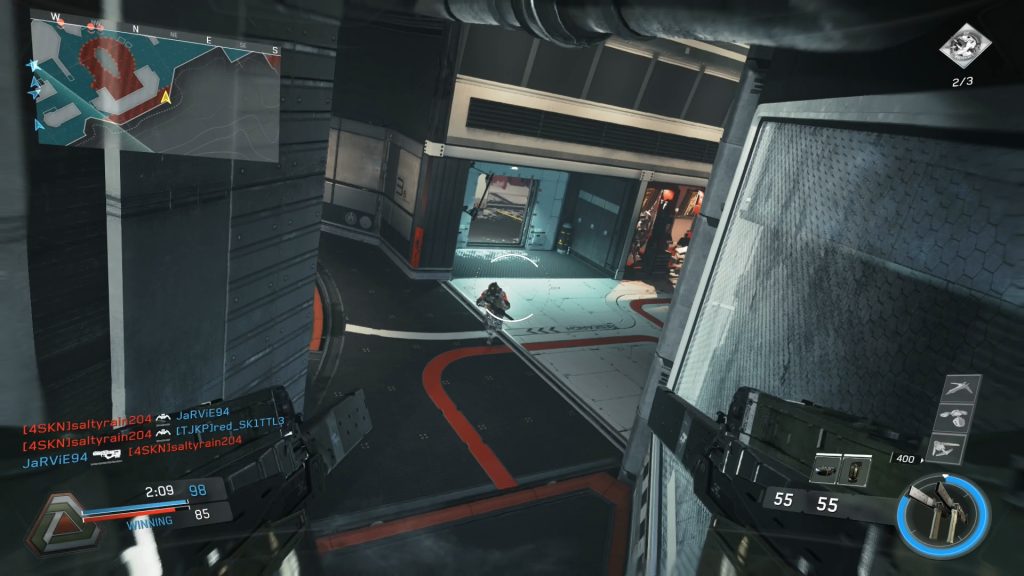
Getting the drop
The Specialists of BO3 have been replaced by Rigs, however their function is very similar. Like Specialists, each of the seven Rigs offers a time-based ultimate ability, but in a twist to BO3’s system each Rig also has a passive perk you can choose. These include faster health regen or the ability to ping the area following a successful kill, and they’re all fairly powerful. The developers boasted that the Rigs would cater to radically different playstyles (like run ‘n’ gun or sniping), but really it’s just another set of perks to choose from outside the usual Pick 10 system.
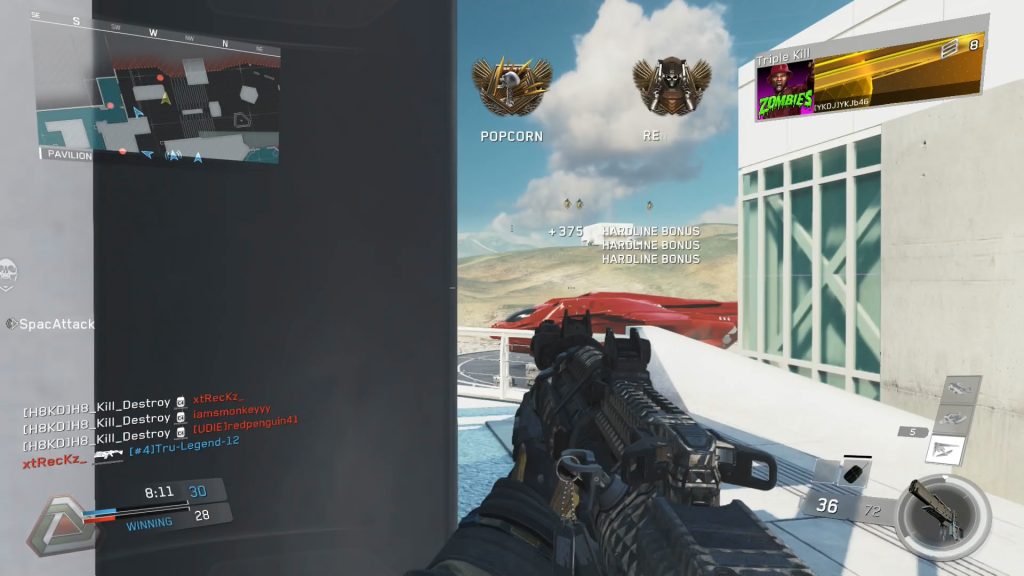
C4: Fun for the whole family

Score a triple feed and make them watch
In my opinion, the interesting weapon variety is one element that sets IW apart from the other iterations of COD. I’d go so far as to say that experimenting with various loadouts is probably at the heart of my enjoyment of this title, and makes some of the less impressive aspects bearable. The most interesting weapons have multiple functions that can be easily switched between on-the-fly in order to adapt to different types of engagements. For instance the Type 2 is an assault rifle with energy-based projectiles and a high rate of fire that can be split into two SMGs for ultra-close quarters combat. There’s also the EBR-800 sniper rifle that turns into an assault rifle and the RPR Evo that morphs from SMG to assault rifle. Each weapon has a wildly different feel, and I frequently switched between loadouts to accommodate the different maps and modes. Often in COD games I have found that you can rely on one or two guns to get you out of most situations, but in IW I have at least seven or so that I’m constantly looking to upgrade and unlock attachments for (with my current favourite being the slow-firing powerhouse Volk assault rifle).
This weapon diversity is further buoyed by unique weapon variants that come in four flavours of rarity, and can be unlocked from Supply Drops or built using a currency known as salvage. Supply Drops can be opened using keys obtained through normal gameplay, and salvage can be earned by completing tasks (like earning kills with specific weapon types or Rigs for example) for factions called Mission Teams within multiplayer matches. With salvage you effectively purchase the variant you want, whereas Supply Drops you are rolling the dice and get three random items for each one you open (these items include not only weapon variants but also calling cards, emblems and cosmetic items). The vast majority of these weapon variants are significantly more powerful than the base weapon, offering a distinct boost to some of its stats. Some of the variants also come with unique boons such as painting a target on your radar on a successful shot or giving you a random perk on three successful kills. Basically, you want these. I managed to nab an Epic EMC Avalanche handgun early doors which has a perk called Lucky 7. This fires seven out of the fourteen available bullets in the chamber in rapid succession, and is criminally fun to use. Once I’d levelled them up I was dual-wielding a laser-sighted pair of these bad boys, ending up with
essentially a 14-burst pistol setup from Hell. It sounds unbalanced, however they’re actually quite difficult to use, but totally worth the rage screaming on the other end of the mic.
The fact that weapon variants offer only advantages with no trade-off in other stats (like in AW) makes this system undeniably pay to win
With weapon variety being IW’s greatest asset, it is also a co-contributor to one of its biggest problems: unscrupulous business practices. I mentioned that Supply Drops can be purchased with keys, but if you don’t actually feel like playing the game you can simply buy COD Points that do the same thing with real money. The fact that weapon variants offer only advantages with no trade-off in other stats (like in AW) makes this system undeniably pay to win. I’d be able to forgive it if perhaps the Supply Drops and salvage were easier to acquire, but obtaining these (especially salvage) is painfully slow, and due to the sheer amount of things you can unlock you’ll have to pray fervently to RNGeesus for that one weapon that you’ve had your eye on. This slow progression obviously exists to incentivise microtransactions, and in a full-priced AAA game this practice is abhorrent at absolute best; the fact that unlocking these Supply Drops resembles playing the pokies is no coincidence.
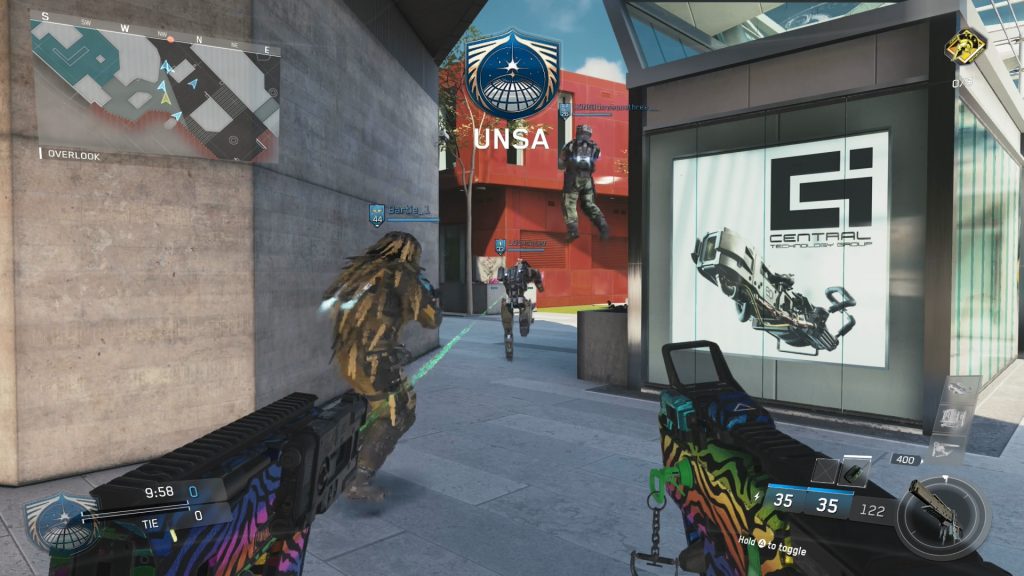
#swag

Death comes in many forms
My other main criticism of the game is the net code. While it’s not truly terrible, it still relies on ridiculous peer-to-peer server infrastructure that makes it wildly inconsistent in terms of lag and hit detection. There are games out now that utilise dedicated servers that positively slaughter IW in terms of online match quality (the two that spring to mind are Battlefield 1 and Titanfall 2). I use a wired connection and have relatively fast speeds (by Aussie standards) and a good ISP, but I’d say at least 10% of the matches I joined I may as well have taken a nerf gun onto the battlefield for the game-breaking amounts of latency I experienced. Even in good quality matches the lag compensation will ensure that even if you clearly managed to duck behind a wall on your screen, that does not mean you can’t still cop a bullet there if the other player is fighting a past version of you that never managed to get behind that wall. It is… infuriating (for a cool analysis of the game’s netcode check out this video from Youtuber Battle(non)sense). There is also zero indication of match quality aside from a bar meter which is about as useful as an Arts degree at a Macca’s drive-thru. A 4-Bar (max) connection represents a ping of less than 120 ms…how is this useful as an indicator of match quality? If you have 120 ms ping in a fast-paced FPS you may as well just sit in the middle of the map and cry like Matt Damon in Saving Private Ryan, why not give a live ping-tracker like Titanfall 2? Please for the love of God give the 20th Century back its peer-to-peer servers and invest in proper dedicated servers on console.
Final Thoughts
Infinite Warfare is a game that will be remembered for a stellar campaign, but it’s also got some solid chops in the multiplayer department. While microtransactions have left a sour taste in my mouth, and the continued insistence on peer-to-peer networking is baffling, the game has successfully instilled in me a desire to continue progressing and experimenting with its varied arsenal. While it’s unlikely that the dark lords of Activision will take time out to read this lengthy review from a small Australian website, I hope that one day they realise a game’s quality and legacy can sometimes be more important than the amount of money it made from microtransactions.
Reviewed on PS4

- Infinity Ward
- Activision
- PS4 / Xbox One / PC
- October 14, 2016



Kieran is a consummate troll and outspoken detractor of the Uncharted series. He once fought a bear in the Alaskan wilderness while on a spirit quest and has a PhD in organic synthetic chemistry XBL: Shadow0fTheDog PSN: H8_Kill_Destroy





